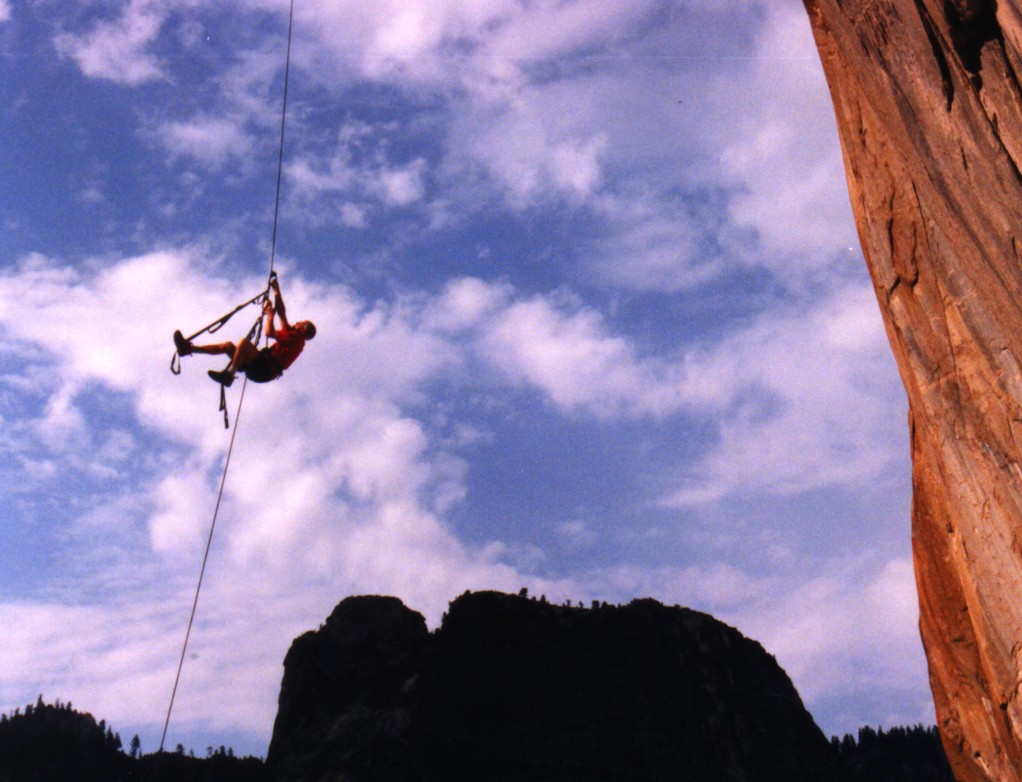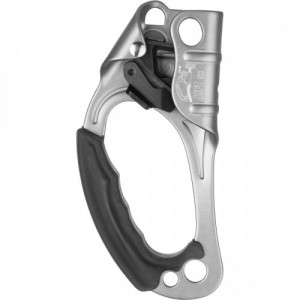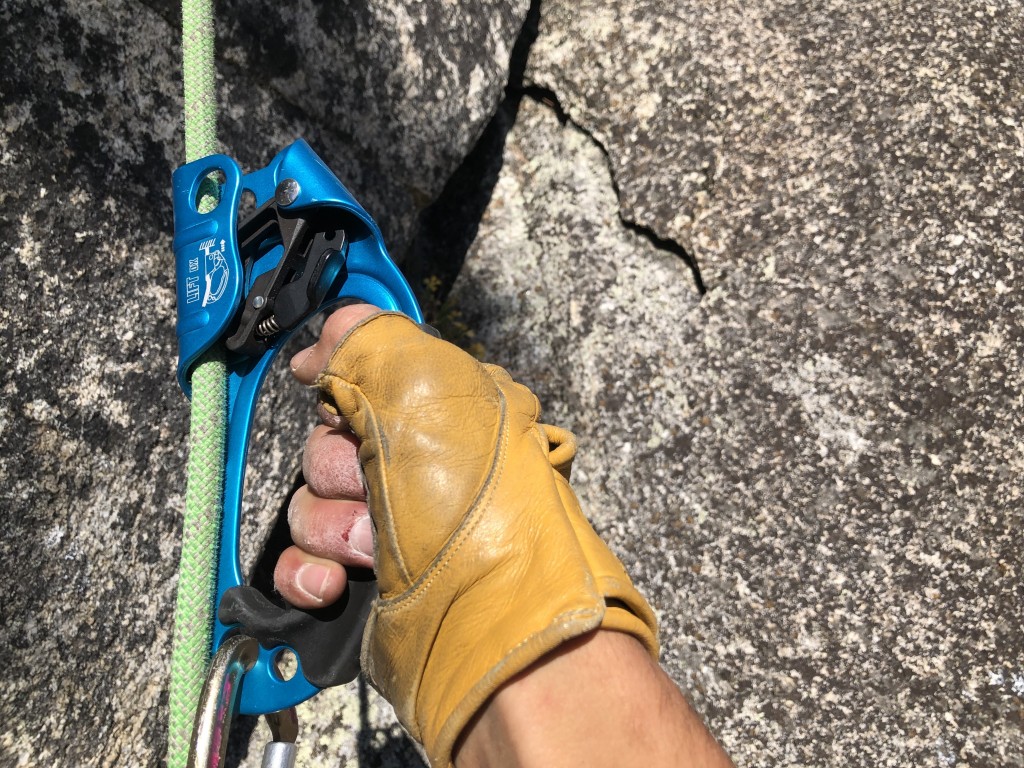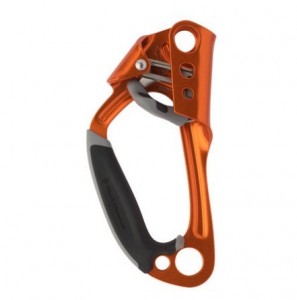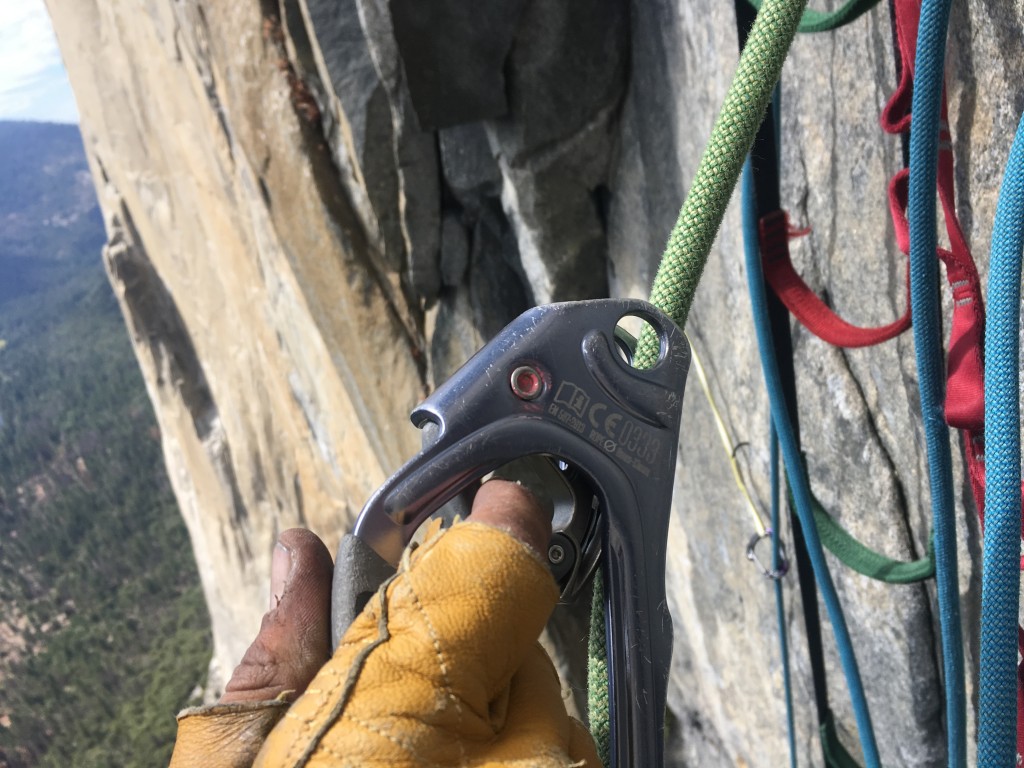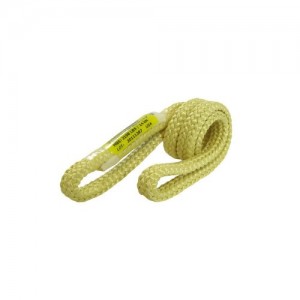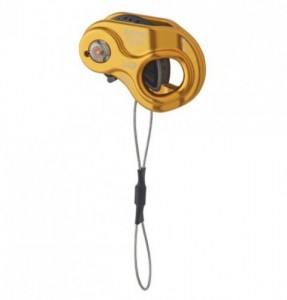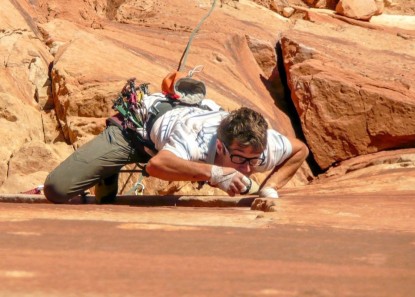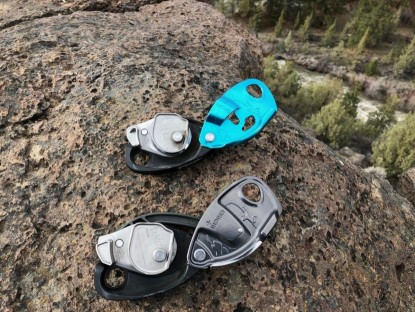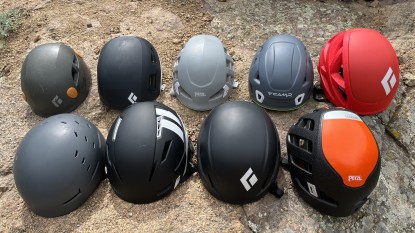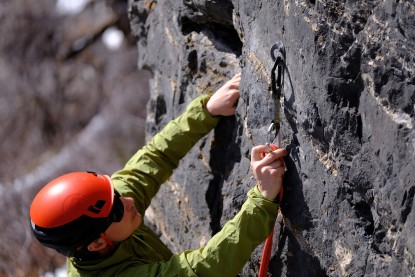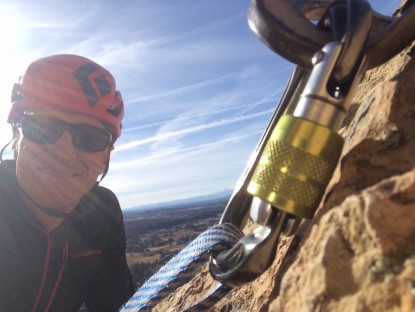The Petzl Ascension outperformed the Black Diamond Index by a hair to come out on top. It is a bit lighter, slightly smoother on ropes, and simpler to operate than the Index. The Ascension has an extra-wide lower hole that enables two carabiners to be clipped or for the gate of a locking carabiner to be passed through. This is a great feature that can save some time if you need to take something off the bottom carabiner. With its big wall functionality and simplicity, the Petzl is more than adequate for a wide range of applications and has been proven to stand up to years of use in harsh conditions.
The main drawback of the Ascension, other than being expensive, is the handle comfort; this is a subjective criticism, but the raised index finger bumps rely on your hand being the right size to fit them, unlike the BD handle, which doesn't have sharp points. Again, this is personal preference, and most discomfort issues are solved with climbing gloves, which most people use anyway. Overall, the Petzl models are the best ones that we tested but only edged out the competition by a narrow margin.
If you're on a tight budget or only climb big walls occasionally, the Kong Lift is an excellent affordable option. It has a simple design and feels like a budget version of the Petzl Ascension. The large handle has a molded rubber grip, and it is a very functional model without any frills. Aside from comfort and some minor ease of use attributes, the Lift is just as effective as much more expensive options and gets the job done. For new wall climbers or those who aren't bothered by minor inconveniences, the Lift is a superb wallet-friendly choice.
The Kong Lift slides well up the rope, but its cam trigger can only be operated with a thumb and isn't as comfortable as models with molded plastic or rubber triggers. The teeth aren't nearly as aggressive as those of other mechanical models that we tested, but this didn't seem to make a difference during testing. Our testers' chief complaint about the Lift is that the bottom hole is too small to fit a locking carabiner's gate. This isn't a huge issue, but it can be an inconvenience when you need to unclip something from the bottom carabiner.
The Black Diamond Index is a thoughtfully-designed option with some notable ease of use features. It is very similar to the Petzl Ascension, with the main difference being that you can operate the cam of each ascender with a thumb or index finger. Our testers appreciated this functionality and found it to be a useful capability. It arguably has a more comfortable handle than the Petzl but is a bit heavier and didn't feel as smooth on thicker ropes.
There are no significant disadvantages of the Index, and it's a great performer on the wall. Like other types of wall climbing gear, you're likely to feel more comfortable with familiar equipment. The Index provides the Petzl Ascension with some stiff competition and is worth purchasing if the index finger operation is something that you would use. We liked this feature and found the added versatility to be useful.
Whether multi-pitch climbing or skiing in crevasse country, the Sterling HollowBlock is a light and effective self-rescue tool. It's a 6.8mm prusik that is far lighter, stronger, and more convenient than cord tied with a double fisherman knot, and you can use it on skinnier ropes than most mechanical ascenders can accommodate. Despite being more expensive than tying a loop out of accessory cord, it's much cheaper than alternatives like the Ropeman or Tibloc and much better for friction hitches than a loop of cord. The HollowBlock is also a perfect backup for your belay device while rappelling.
The downside to using a friction hitch as an ascender is that they typically require two hands to operate. It also doesn't attach and re-attach quite as fast as a Ropeman or Tibloc but is much more compact on a harness. On icy ropes, it doesn't have the same bite as a model with aggressive teeth. (These are minor things that may not affect your use). Overall, it's a great item to have in the mountains, and our lead tester has one on his harness at all times.
The Ropeman has too many uses to list here. It can be a critical part of your self-rescue kit, a backup while jugging, a hauling device, and even part of a self-belay system. It is easy to justify always having one on your harness because it is so light and compact.
Aside from being expensive, the main drawback of the Ropeman is that it requires research and knowledge to know which setups it can be used safely in, especially if used in a self-belay system. If you are just starting to climb, it's better to master the prusik first.
How to Choose Ascenders
Unlike a harness or shoes, where you can assess sizing and fit in a store, there is no easy way to test ascenders short of purchasing or borrowing them. It takes some practice to adjust to each different model, and all of them are easy to use after some time. It is helpful to consider the opinions of experienced climbers rather than make a judgment based upon appearance in a store.
Left and Right
Most models with handles are sold individually, not in pairs. Before you order online, make sure that you have one for your right hand and one for your left. Each one is usually a different color. This isn't an issue with simple rescue models.
Ease of Sliding Up the Rope
Of all the attributes to consider, ease of sliding up a rope is the most important one. This will determine how tired your arms get over time and in which applications of each model can be used. If the device slides up effortlessly, you'll save a lot of energy after many pitches on a big wall.
Mechanical ascenders with large handles are perfect for big walls and fixed lines but are far too large and heavy to be practical for self-rescue applications. Friction hitches are incredibly compact but don't easily slide up ropes and are the slowest type of ascender to operate. This is fine if you only need one for emergency use.
Ease of Taking On and Off the Rope
This metric is the second most important attribute to consider when choosing an ascender. No model is intuitive to use at first; it takes practice to be able to quickly get them on and off the rope. Some models have large handles and comfortable thumb levers on the cams that enable convenient one-handed operation. We even tested some models with "triggers" for the cams to be retracted with your index fingers. Borrowing a friend's set can be helpful in finding what type of model is best suited for your hands.
Weight
Weight is not a significant factor when choosing an ascender for wall climbing but plays a large role for ones that you will leave on your harness for self-rescue applications. It is worth considering size and weight if you plan to have a small one on the back of your harness at all times. This can be helpful in the event that you need to ascend a rope or set up a rescue system in an emergency.
Simple passive models that can be used as friction hitches are typically compact and light, being virtually unnoticeable on the back of your harness. Many climbers like to have one on the back of their harness at all times. Most rescue-specific models are more complex and can be a bit bulkier than friction hitches. These tend to be much faster to operate and easier to move up a rope, but are usually overkill for most recreational climbers.
Conclusion
Every model we cover in this review fills a unique niche. Ascenders are crucial tools for many climbing applications and can be helpful for recreational climbing where you may need to self-rescue in the event of an accident. Mechanical models with large handles are invaluable for moving up fixed lines and are a massive step up in convenience from friction hitches. From big walls to glaciers to self-rescue, our review can help you choose the right one.
— Steven Tata & Chris McNamara


